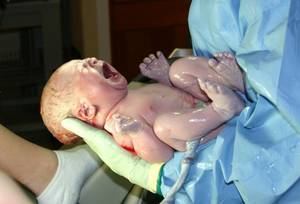Sometimes lifesaving research doesn't have to involve complicated or expensive technology - it just needs a little thought, according to new research in this week's New England Journal of Medicine.
Researchers funded by the US National Institutes of Health and the Bill and Melinda Gates Foundation have discovered that a short training course can help to cut the rate of stillbirths by more than 30 per cent in developing countries - given that estimates suggest that there are 3 million stillbirths worldwide each year, and nearly 4 million infants die within a month of birth, that's a staggering difference for such a simple solution.
 The researchers were testing the effectiveness of a three-day training course for birth attendants or untrained midwives, which highlighted simple techniques for caring for newborns, breastfeeding, keeping babies warm and dry, and the signs of serious health problems.
The researchers were testing the effectiveness of a three-day training course for birth attendants or untrained midwives, which highlighted simple techniques for caring for newborns, breastfeeding, keeping babies warm and dry, and the signs of serious health problems.
One healthcare worker from Argentina, the Democratic Republic of Congo, Guatemala, India, Pakistan and Zambia went to the US to learn newborn care techniques, and went home to train others - reaching around 3,600 untrained healthcare workers in rural communities.
Researchers also taught the health care workers how to check infant health, diagnose whether a baby was stillborn, and check for other conditions. And they provided local health care workers with scales for weighing newborns, hand-held pumps and masks to fill babies' lungs with air, and clean-delivery kits to prevent infection. Then the scientists compared data on babies born before and after the training had been given.
Overall, they studied 120,000 births, and found that the rate of stillbirths dropped sharply--from 23 per 1,000 deliveries to 15.9 per 1,000. The scientists think this is because some of these babies would not have taken a breath on their own, and would have been considered to be stillborn. But with their new knowledge, a birth attendant could help the baby to start breathing and - in many cases - save its life. Supporting this idea, the researchers didn't find a difference in the number of babies who appeared to have died in the womb, suggesting they couldn't have been saved at birth.
It's a simple intervention, but it shows that giving the right training to the right people, in the right place, can help to save lives.









Comments
Add a comment